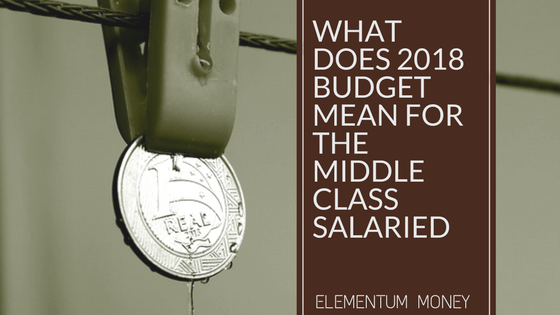
As promised, I am back with a concluding post about the aspect of Tax Planning. In the last post, we covered fair ground by talking about why you must claim what is rightfully yours, what are the 4 main sections of tax planning and the first 3 sections ie House rent allowance or HRA, Leave Travel Allowance or LTA and medical reimbursements. That leaves us with the huge chunk of Section 80.
Section 80 generally covers a lot of the good financial planning spends like investments and insurance (health and life). In some ways, it is the governments’ push to get you to start planning your finances wisely. The post is a little long but I have tried to limit myself to good-to-know information. Let’s go right into what all make up this Section 80.
SECTION 80C
The big daddy of tax exemptions, for a lot of people Section 80 is synonymous with Section 80C. It is a widely known fact that Section 80C allows you tax exemption up to Rs. 1,50,000. There are multiple ways through which you could come up to this amount. Below I will list down the most commonly used instruments through which people make up their Section 80C tax exemptions.
Employee Provident Fund (EPF):
Did you know that the employee contribution to EPF is eligible to be claimed for tax exemption under Section 80C? Click To TweetCheck your pay slip and you will see every month a tidy sum of 12{76b947d7ef5b3424fa3b69da76ad2c33c34408872c6cc7893e56cc055d3cd886} of your basic salary going into EPF. You are allowed to put in that amount as part of your 80C declarations.
Public Provident Fund (PPF): Traditionally favoured, PPF is a good solid investment option for tax exemption under Section 80C. While interest rates have been coming down in the last few months (currently standing at 7.6{76b947d7ef5b3424fa3b69da76ad2c33c34408872c6cc7893e56cc055d3cd886}) the rates are still much higher than a Fixed Deposit. It also helps that the maturity amount is completely tax free. The long maturity period of 15 years helps keep the investment discipline to make the compounding magic work. The accumulated funds can be partly withdrawn or a loan taken against it in this 15 year period The annual investment limit in PPF has been increased to Rs. 1,50,000 in tune with exemption limit under Section 80C.
National Savings Certificate (NSC): Not looking to lock in your money for 15 years (though it is not a bad idea at all)? Then another great risk-free option is the National Savings Certificate with the same interest rate but a 5-year maturity period. Also, unlike PPF where you do need to invest annually (though the minimum annual investment is a tiny amount of Rs. 500), NSC is a one-time invest and lock scheme. If you invest Rs. 10,000 today then you submit the certificate to the same post office on 9th January, 2022 and will be presented with a cheque of Rs. 14,423.
ELSS Mutual Fund: ELSS is the abbreviated form of Equity Linked Savings Scheme. This is a special category of Mutual Funds, investment into which is eligible for tax exemption under Section 80C. It is one of the few market-linked investment options possible for 80C, and a very efficient one at that. With a 3-year lock-in period (though real benefits are reaped with a much longer investment period), you can invest in ELSS either in monthly installments through a SIP (Systematic Investment Plan) or as a lumpsum.
Life Insurance premium: Another essential weapon in your personal finance armoury, I can only hope this is only a small chunk of your 80C exemptions. Why small chunk? The only way life insurance should be bought is through a term plan and not the other jokers being posed in the market as life insurance plans. (link post). Ensure you buy a life insurance with the appropriate cover amount and that your file in your life insurance premium to exempt from tax.
Home Loan Principal: For almost anyone paying off a home loan, this will become the one heavy weight for Section 80C wiping away the need for just about any other investments. To put it in a nutshell, whenever you pay off any loan, every EMI is bifurcated towards paying off interest and towards the principal. With time, the principal element keeps going up while the interest keeps reducing. Every home loan company (Bank and NBFC) provides you with an income tax certificate to claim this deduction. The certificate clearly specifies the amounts paid for principal and interest and the same can be filed in for exemption.
There are a lot of other options which are used for a Section 80C tax exemption. However, the above 6 cater to 80{76b947d7ef5b3424fa3b69da76ad2c33c34408872c6cc7893e56cc055d3cd886} of those used.
SECTION 80CC – INVESTMENT IN ANNUITY PLAN
In an attempt to promote retirement planning, the government has made investment into annuity plans tax exempt. However, this can only be in a select few LIC and other provider schemes as referred to in Section 10 (23AAB) (No need to read up the section. Any such annuity will specify if they are eligible for tax exemption).
However, this section can be seen as an annexure to Section 80C as any contribution to Section 80CCC + Section 80C has to be in a limit of Rs. 1,50,000. To me, that pretty much renders this section useless, as there are more than enough options in Section 80C to exhaust your limit. I am also pretty suspicious of most annuity plans sold in India. Most of them end up giving a return of mere 5-6{76b947d7ef5b3424fa3b69da76ad2c33c34408872c6cc7893e56cc055d3cd886} making the idea of Equity investment with a Systematic Withdrawal Plan as a much better option.
TAX EXEMPTION LIMIT UNDER SECTION 80C + SECTION 80 CCC IS Rs. 1,50,000
SECTION 80CCD – NATIONAL PENSION SYSTEM
National Pension System was conceptualized in 2005 when pension was replaced by NPS for most government employees. Gradually, it was introduced as an option for private company employees as well. However, the product got a real fillip only in 2013-14 when a separate section was created for tax exemption. With Section 80CCD, an individuals’ contribution to NPS is tax exempted for an additional limit of Rs. 50,000. Even the employer contribution (of up to 10{76b947d7ef5b3424fa3b69da76ad2c33c34408872c6cc7893e56cc055d3cd886} of the basic salary) is tax exempt.
However, is NPS really a good idea? Currently, there is a lot of debate around it. While it helps with saving for retirement, unlike most other investment platforms, the maturity amount is not tax free! The NPS corpus achieves maturity at the holders’ age of 60. Are you willing to wait that long? Even at maturity, you cannot withdraw the whole amount as atleast 40{76b947d7ef5b3424fa3b69da76ad2c33c34408872c6cc7893e56cc055d3cd886} of the amount has to be put into one of the select linked annuities.
TAX EXEMPTION LIMIT UNDER SECTION SECTION 80 CCD(1B) IS Rs. 50,000
SECTION 80D – HEALTH INSURANCE PREMIUM

Health insurance premiums are tax exempt under Section 80D
Health Insurance is increasingly becoming as important a financial product as life insurance, if you do not want medical expenses to eat into your saving. The government encourages you to take an employer-agnostic health insurance by making the premium exempt from income tax.
TAX EXEMPTION LIMIT UNDER SECTION 80D IS Rs. 25,000
SECTION 80DDB – CRITICAL ILLNESS TREATMENT
The government recognizes a set of critical illnesses that cause huge medical expenses. In case of money spent on the treatment of any of these specified diseases for self, spouse, children, parents or sibling, you can claim tax exemption.
TAX EXEMPTION LIMIT UNDER SECTION 80DDB IS Rs. 40,000-Rs. 80,000 (Depending on the age of the patient)
SECTION 80EE – INTEREST PAID ON HOME LOAN BY FIRST TIME BUYERS
For a first time home buyer, the government subsidises not just the principal but also the interest. Section 80EE allows you to claim interest payment on the home loan of a first time home purchase up to Rs. 50,000. If you are in the 30{76b947d7ef5b3424fa3b69da76ad2c33c34408872c6cc7893e56cc055d3cd886} tax bracket, this could mean a neat saving of Rs. 15,000.
TAX EXEMPTION LIMIT UNDER SECTION 80DDB IS Rs. 50,000
SECTION 80G – DONATIONS
The feeling that you get while giving to others is something that is not reciprocated through receiving. Section 80G allows you to claim tax exemption on your donations. Some NGOs and charities like the PMO Relief Fund allow exemption of the entire donation amount whereas some are eligible for a deduction of 50{76b947d7ef5b3424fa3b69da76ad2c33c34408872c6cc7893e56cc055d3cd886} of the donation amount. However cash donations of more than Rs. 2,000 (from Financial Year 2017-18) or donations in kind are not eligible for tax deduction.
THERE IS NO TAX EXEMPTION LIMIT UNDER SECTION 80G
SECTION 80E – STUDENT LOAN
The government aims to promote higher education by providing tax exemption on loan borrowed for further studies. The loan must have been used for studies higher than senior secondary. The loan could have been availed for self, spouse or children. Section 80E allows you to claim deduction for the interest component of the loan by showing the bank tax certification for proof.
TAX EXEMPTION LIMIT UNDER SECTION 80E IS Rs. 40,000
SECTION 80TTA – SAVINGS ACCOUNT INTEREST
Savings account interest is also an income, and taxed! This section of the Income Tax rules allows you to exempt yourself of paying tax on the first Rs. 10,000 of savings account interest. So, if you have earned Rs. 25,000 as interest in the financial year, Rs. 10,000 will be exempted through Section 80TTA and the remaining Rs. 15,000 will be added to the taxable income. However this section is generally applied directly at the time of filing taxes as the interest income is also declared while filing taxes.
TAX EXEMPTION LIMIT UNDER SECTION 80TTA IS Rs. 10,000
There is just one section, not a part of the 80 series but of immense importance to any tax payer who has a home loan.
SECTION 24(B) – INTEREST ON SELF-OCCUPIED HOUSE

Exemption is allowed on the interest payment for home loans under Section 24 (B)
Apart from principal, if you are paying home loan for a self-occupied house, there is a huge tax exemption available on the interest payment. The tax payer should be a co-borrower as well as a co-owner in the house. All co-borrowers are eligible to claim the exemption available on interest income for the house. While this is applicable for let-out properties as well, the rules are a little different. For first time home buyers, this exemption is in addition to Section 80EE.
TAX EXEMPTION LIMIT UNDER SECTION 24 (B) IS Rs. 2,00,000
So, there you have it, an exhaustive list of ways to right fully claim your money by reducing your tax liability. I understand if it seems complicated. Drop a comment or an email at aparna@elementummoney.com for any clarification that you might need





Leave a Reply